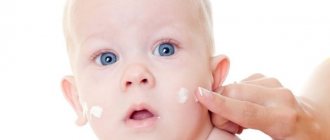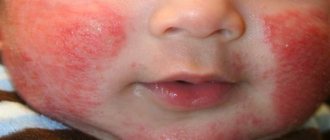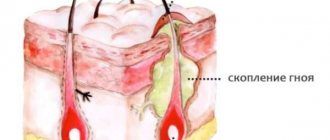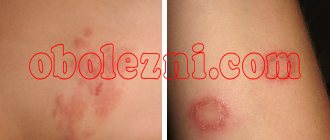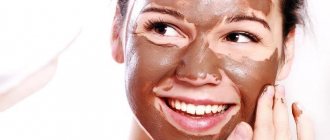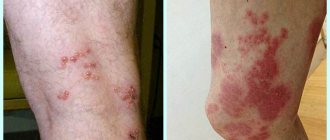For a long time in medicine it was believed that the human stomach is a sterile organ, and bacteria cannot live inside it due to the high level of acidity. But Helicobacter pylori carries out its vital functions in the digestive organ and does this due to the shell, which protects the bacterium from hydrochloric acid. The bacterium is capable of producing an enzyme, urease, which collects around the microorganism and accumulates ammonia, which helps eliminate acid.
In addition to neutralizing acidity in the stomach, the microorganism is capable of releasing a toxin. Toxins negatively affect the mucous membrane of the organ, causing it to produce more secretions. And this process is fraught with inflammation. Toxins destroy the gastric mucosa, increasing the likelihood of ulcerative lesions. But it should be noted that the presence of a microbe in the stomach does not always cause an ulcer of its walls or manifest itself as inflammation. About half of infected people show no signs of stomach disease.
Causes of acne
Acne is an inflammatory process that affects the human skin surface. They arise due to increased activity of the sebaceous glands. They can affect any surface of the body, most often located on the face, back, shoulders and chest. The nature of their origin has several forms. The main causes of skin rashes are diseases:
- endocrine system. Diabetes mellitus, obesity, and pathologies of the adrenal glands are directly related to the appearance of a rash. Hormonal imbalance becomes a frequent ally of acne. It is typical for adolescents, pregnant women, and women during premenstrual syndrome;
- gastrointestinal tract. Toxins come out through the skin in the form of pimples that are not eliminated from the body naturally;
- vegetative system;
- skin (hyperkeratosis).
The occurrence of skin redness is also influenced by medications (hormonal, antibiotics, vitamins), heredity, and frequent stress. Poor quality cosmetics can cause an allergic reaction in the body.
Chronic gastritis
Pathogenic factors of hCG have the same signs as those of peptic ulcer and duodenum. In case of bacterial infection, antibiotics, diet and natural medicines are also prescribed.
Gastritis
Gastritis leads to skin aging. Due to impaired absorption of proteins, fats and carbohydrates, acne appears. Localized with gastritis in the forehead, cheeks, shoulder and chest. In addition to the rash, dizziness, vomiting, dry mouth, abdominal pain and swelling of the mucosa are observed. If such a rash is treated externally, there will be no long-term effect. When gastritis is cured and the rash goes away. Following a certain diet can protect against this disease. Forget about spicy and fatty foods. It is advisable to eat lean fish, nuts, vegetables and asparagus.
Chronic pancreatitis
Inflammation of the pancreas is a disease, one of the causes of which is diabetes mellitus. The basis of treatment for uncomplicated forms is a protein diet and herbal medicine.
The cause of urticaria in diabetes is a reaction to drugs used to treat diabetes.
The use of herbal remedies for CP is necessary to prevent gallstone disease. To normalize the flow of bile, use:
- celandine;
- anise fruit;
- corn silk;
- dandelion root.
Medicinal infusions containing sedatives, antispasmodics, tannins contribute to the remission of chronic pancreatitis.
Stomach ulcer
Stomach ulcers are also characterized by nausea and vomiting. Also observed: heartburn, cramps and pain, poor appetite, bloating, constipation, belching and acne. Acne is located in the frontal region, on the chin, on the shoulders and back. To get rid of such rashes, first of all, you need to follow a special diet. Doctors prescribe complex treatment, thanks to which recovery will come.
Gastric erosion
The symptoms of gastric erosion are very similar to peptic ulcers. In addition to all the signs that these two diseases have in common, there are also distinctive features. Internal bleeding, a drop in hemoglobin are also observed, bile is poorly removed from the body, blood in the stool and anemia are encountered. The rashes are localized on the forehead, cheeks, chin and back. A strict diet and complex treatment under the supervision of a doctor will relieve erosion and acne associated with the disease.
Duodenitis
It is localized on the mucous membranes of the duodenum. There is weakness, headache, belching, vomiting, diarrhea, fever, intestinal bleeding and acne. Acne can be found on the face, even on the legs and arms. Drug treatment and a strict diet are prescribed.
Gastroduodenitis
This is inflammation in the duodenum and some areas of the stomach. This disease has all the symptoms as with duodenitis, but poor sleep and pale skin are a sign of gastroduodenitis. Rashes on the face and body.
Autoimmune diseases
Diseases of the thyroid gland provoke the development of chronic autoimmune urticaria. Unlike other types, it occurs in a more severe form and does not respond to antihistamines.
HC can also be caused by rheumatoid arthritis, lupus erythematosus, and celiac disease.
lupus erythematosus
Fever and the appearance of a specific rash on the face can be a manifestation of lupus erythematosus. The skin disease tends to affect internal organs and is then called systemic lupus erythematosus.
Pink-red ring-shaped spots, growing, cover an increasingly larger area, dry out, forming scales. Deep marks remain where the scales fall off.
Therapy for lupus erythematosus consists of prescribing steroids, B vitamins, and antifever medications.
Celiac disease
Congenital protein intolerance causes chronic inflammation of the small intestine. Main features:
- intolerance to dairy products;
- chronic diarrhea;
- stomach ache;
- anemia;
- thirst.
A nonspecific sign of celiac disease that may appear is atopic dermatitis (redness and dryness of the skin). This is an allergic reaction of a weakened immune system to any external irritant.
Dermatitis can be caused by dust, wool, or food.
A lifelong diet and medications that replace animal protein are combined with treatment of associated manifestations. An immunologist or allergist monitors the patient to prevent exacerbation of atopic dermatitis.
Rheumatoid arthritis
Morning stiffness and the appearance of papules (dense subcutaneous nodules) are symptoms of rheumatoid arthritis. The disease is considered incurable. Treatment is aimed at weakening the inflammatory process, relieving painful manifestations, and preventing complications.
Dysbacteriosis
Determined by bacteriological culture and coprogram. When the intestinal microflora is normalized, skin rashes will also disappear. They are located mainly on the chin. Food must be of high quality and balanced for this disease. Probiotics and prebiotics are prescribed as drug treatment.
Decreased stomach acidity
The first signs of low acidity are a sour taste in the mouth. Then comes vomiting, heartburn, nausea, heaviness in the stomach, intestinal upset and acne. Acne appears on the face, back and neck. If you eat right, then your acidity will return to normal and acne will disappear.
Types of acne
Skin manifestations take different forms, depending on the cause and nature of the rash. The main types of acne are classified:
Whiteheads
They are also called white dots. Clogged pores that are located deep under the skin and therefore do not oxidize. They arise due to excessive work of the sebaceous glands as a result of improper facial care. They may also indicate a disease of the internal organs.
Painful red spots
The so-called “medicinal inflammations”. Most often they appear in people who use special steroid drugs, as well as in an excess of certain substances in the body.
Black dots
They also have a name - blackheads. Very similar to whiteheads, the same clogged pores. However, they are located on the surface of the skin, due to which they oxidize and darken with constant contact with air. A common cause of these acne is poor diet, poor skin care and obesity.
Small inflammations that look like red bumps. When they mature, they increase in size and acquire a white top, which is an accumulation of pus. These inflammations can be extremely painful and, in turn, according to their appearance and cause of occurrence, are divided into subtypes, such as cystic acne, comedones, etc.
The body as a whole
Our body has an unusually complex organization, which today is not fully understood. Failures in the operation of some systems will directly or indirectly affect the functioning of others. Very often, the development of pathological processes in the body is signaled not only by general malaise and pain, but also by the condition of the facial skin.
Every person should know that one of the most common causes of rashes on the face is improper functioning of the digestive system.
For example, rashes on the skin of the forehead can signal a violation of the intestinal microflora and pathologies of the gallbladder, pimples on the chin can pop up due to the accumulation of toxins in the body, etc.
Of course, a person can eliminate a cosmetic defect in the form of a pimple using special cosmetics or folk methods. However, the problem will appear again and again until measures are taken to diagnose and treat the disease causing the rash.
Gastritis as a cause of acne
The main cause of gastritis is the bacterium Helicobacter pylori. A small green microbe, with its metabolic products, provokes the occurrence of inflammatory processes in the stomach. Various factors can push an infected organ to develop pathologies. Among them: unhealthy diet, stress, alcohol, heredity, medications.
Main symptoms of gastritis:
- discomfort in the gastric area;
- nausea, vomiting;
- impaired metabolism;
- bad breath.
The types of acne with gastritis differ. Each type of inflammation of the gastric mucosa characterizes a specific form of the disease. The allergic type is characterized by urticaria - small pale pink acne. They are localized in one area of the body, mainly on the stomach. It appears after the allergen enters the patient’s stomach. Causes irritation and itching. If, when diagnosing gastritis, the form of the course was incorrectly identified, acne can be caused by incorrectly prescribed medications.
The bacterium Helicobacter pylori simultaneously causes rashes and pimples on different parts of the body. They crush various types: blisters, swelling, redness, pustules. Small itchy inflammations are more typical for children. Adults over forty suffer from pink pimples, and at the same time the sensitivity of the ocular mucous membrane increases. Bacteria, through their vital processes, cause allergic reactions in the form of acne throughout the body.
Important! With gastritis, acne affects more than 80% of those with inflammatory processes in the gastric mucosa infected with Helicobacter.
If during gastritis the acidity of the stomach is reduced, vitamin deficiency appears. Absorption of beneficial microelements becomes difficult. It causes dryness of the skin and anemia develops.
Interesting fact! Acne on the cheeks indicates problems with the stomach - the presence of gastritis. Pink pimples, characteristic of mature women, occupy a large surface of the entire face.
Manifestations on the face
According to medical statistics, people with rosacea have Helicobacter bacteria on their faces. This happens in 84% of cases. If the rash appears on the face, the pimples are usually located on the nose, cheeks, forehead and chin. Often women around the age of 40 develop such diseases.
In some cases, the conjunctiva and cornea of the eye are affected by pathology, with soreness of the eyelids, intense separation of tears and fear of light.
Some studies prove that acne on the forehead disappears when problems with the gastrointestinal tract are eliminated. This proves the fact that dermatitis occurs due to the activity of the Helicobacter bacteria in the human body.
Types of acne with gastritis
Even before the appearance of clear clinical manifestations (in the form of nausea, heartburn, vomiting, etc.), only acne on the face or other parts of the body can indicate a stomach disease. In this case, it is useful for the patient to know by which rashes to recognize the beginning of the pathological process.
The allergic type of gastritis is characterized by a rash on the body similar to urticaria. It is represented by numerous inflammatory foci on the skin, which vary in size from 2 to 10 mm. The affected areas are very itchy, which can lead to scratching and infection in the wounds. Then the pimples transform into ulcers.
Most often, urticaria with allergic gastritis is localized in the lower abdomen; on the face, rashes appear mainly on the surface of the cheeks. In children, this symptom is in some cases accompanied by Quincke's edema (rapid swelling of the skin, subcutaneous tissue, and muscle tissue).
Some patients experience acne due to gastritis in the form of acne, or blackheads. Impaired absorption of nutrients due to damage to the gastric mucosa leads to the accumulation of toxins in the body, which it tries to remove through sebum. As a result, the skin pores become clogged with a sebaceous plug, the surface of which darkens during oxidation, causing blackheads to form on the face.
If the disease was caused by the microorganism Helicobacter pylori, then the rash on the skin will look like reddened bumps and blisters. In patients over 40 years of age, bacterial gastritis causes pinkish pimples.
If nausea, heartburn, belching, regular vomiting and abdominal pain are added to the skin lesions described above, then you should contact a qualified specialist as soon as possible.
Mechanism of appearance of skin symptoms
Violation of the functional state of the digestive tract is directly related to the condition of the skin. This nuance is the cause of various skin reactions when infected with Helicobacter pylori. The provoking factor is toxic damage to the body by bacterial waste products. Skin manifestations can occur in the form of acne, dermatitis, acne and other pathologies accompanied by the formation of pimples and redness of the epidermis.
Mechanism of symptoms:
- disruption of the absorption of nutrients provokes a lack of amino acids and vitamins;
- decrease in the protective properties of the skin;
- sebum secretion increases;
- the body tries to remove toxins through the pores;
- the consequence is the active proliferation of bacteria in the epidermis.
Why does the skin condition deteriorate with gastritis?
To understand why gastritis provokes rashes on the face, you need to know what this disease is. Gastritis is an inflammatory process in the gastric mucosa, which lines the inner surface of the organ.
When a person develops gastritis, the food he eats is less digestible, which affects the person’s well-being and energy. A lack of nutrients and vitamins leads to fatigue, apathy, malaise and skin problems.
The rash can occur during both acute and chronic course of the disease; it can be localized on the skin of the face, abdomen and some other parts of the body.
One of the most common causes of rashes on the body is an allergic form of gastritis. It is provoked by the entry of an irritating substance into the digestive system, which in a particular person can cause an allergic reaction, most often - instantly appearing pimples. The allergen in this case can be either a food product or an inedible chemical compound.
If we look at the problem deeper, the culprit of this skin reaction is a pathogenic microorganism - the bacterium Helicobacter pylori. It is she who is credited with the development of many diseases of the gastrointestinal tract, including gastritis and gastric ulcers. Helicobacter pylori causes atopic dermatitis in the patient.
How can you become infected with Helicobacter pylori?
The bacterium is highly contagious. Even complete personal hygiene cannot guarantee that a person will not become infected. However, you should protect yourself and your family as much as possible.
Routes of transmission of Helicobacter pylori:
- When using shared utensils.
- By getting saliva into the body of another person.
- Bacteria introduced by medical equipment (for example, during endoscopy)
- Through hygiene items.
You can become infected with the bacteria anywhere: in a restaurant or cafe, through kissing, at home. If one family member is diagnosed with Helicobacter pylori, all family members must be tested. Helicobacteriosis is considered a familial disease. With a probability of up to 95%, this bacterium will be detected in other family members.
The bacterium is merciless; it enters the children's body on a par with adults. For this reason, it is not recommended to feed your baby by tasting food from his spoon. Often children become infected at a very young age, when the mother licks a pacifier or spoon.
You cannot drink from the same bottle with friends and even relatives. Also, you should not paint your lips with your girlfriend’s lipstick. If a person sneezes or coughs directly at you, ask them not to do it or simply look away. As you already understand, the route of transmission of Helicobacter pylori is oral. The bacterium is easily transmitted in everyday life. It would be better if they consider you too scrupulous in matters of hygiene, but such measures can protect you.
Dishes must be handled carefully. Since the bacteria in the air dies, there is a chance to avoid infection with the bacteria in public catering areas. In the event that the dishes in the cafe have been properly processed and washed. But, unfortunately, you can’t always rely on the integrity of institutions. If one family member has a bacteria, he should have separate cutlery and wash dishes with a separate sponge.
Routes of transmission of the bacterium Helicobacter pylori
Diagnosis of the disease
Gastritis with high acidity is often caused by the bacterium Helicobacter pylori. Patients experience heartburn and stomach pain. The atrophic form of gastritis involves low acidity. It is characterized by constipation, impaired motility of the gastrointestinal tract, dry skin, as well as impaired absorption of vitamins and microelements.
Additionally, a piece of the gastric mucosa can be examined for the presence of Helicobacter. After examining the patient’s body, the attending physician prescribes the correct treatment, as well as a nutritional system for the coming weeks or months. Typically, therapeutic measures are carried out by a cosmetologist together with a gastroenterologist.
Diagnosis of Helicobacter pylori: methods and tests
Important: Correct diagnosis is the first and important step on the path to recovery.
There are several diagnostic methods that can help identify the presence of harmful bacteria.
- Endoscopic examination of the stomach . This is the most accurate method that allows you to quickly and accurately determine the presence of bacteria. The procedure is carried out strictly on an empty stomach. During endoscopy, a piece of material is taken for a urease test. The procedure is painless, but quite unpleasant. The result will be ready within a few minutes. The advantage of this procedure is the ability to examine the condition of the stomach and duodenum.
- Blood for antibodies to Helicobacter pylori . Blood is donated strictly on an empty stomach from a vein. The result will be ready in a few days. As a result, a titer will be displayed, according to which you can understand whether antibodies to the bacterium are present in the body or not. According to this analysis, as a rule, no treatment is prescribed. If the titer is high, the patient is sent for further examination. It is known that antibodies in the blood remain for some time after getting rid of the bacteria.
- Breath test . A modern diagnostic method that can be performed on children and pregnant women. The essence of the test is that the patient first exhales into one bag, then he is supposed to drink urea. Then you should exhale into another bag. Then the contents of the two bags are compared, based on this a conclusion is made about the presence of Helicobacter pylori. The test is convenient because you can quickly get the result. The breath test is performed on an empty stomach.
- Stool analysis . The result may not be obtained immediately, but after a few days. This diagnostic method is suitable for studying children, elderly, pregnant, and debilitated patients. The results are quite accurate.
Diagnosis of Helicobacter pylori
How to treat acne with gastritis
To cope with a cosmetic problem on the face or stomach, it is necessary to cure the internal problem. And therefore, with gastritis, acne should be treated not by a cosmetologist, but by a gastroenterologist. If the stomach problem is solved or at least brought under control, then the rashes on the face will go away on their own.
For gastritis, complex therapy is used, which often includes a therapeutic diet and medication. In the case of an allergic form of the disease, treatment necessarily involves excluding the allergen from the patient’s diet.
Which doctor treats red spots?
If there are red spots, you should consult a dermatologist. Only a specialist will be able to identify the cause based on the results of tests performed on the patient. When the diagnosis is made, strictly follow all the doctor’s instructions and treat diligently.
If it was an infection of the epidermis, it is worth excluding the possibility of repeated infection; in case of autoimmune diseases, consult a specialist to alleviate the condition. Never try to remove red spots yourself, do not rub or comb them, follow the rules of hygiene.
What tests should I take?
If you have rashes on your face, the first thing you should do is go to a dermatologist. In addition to the examination, he will refer you for a consultation with a gastroenterologist. A thorough examination of the gastrointestinal tract will be carried out as follows.
- A gastroscopy is performed. Examine the gastric mucosa. If gastritis or ulcers are present, a course of medications is prescribed. After this, the rash quickly disappears;
- Examination for dysbacteriosis. When taking tests, the intestinal microflora is determined. Pathogenic and causes rashes. A course of antibiotics is prescribed;
- Extensive blood test. Here they will check the pancreas, gall bladder and liver.
After passing all the tests, the doctor will make the correct diagnosis and select a course of treatment.
Traditional methods
The use of traditional medicine to treat diseases caused by bacteria must be approved by the attending physician. For this purpose, the following traditional medicines are used:
- herbal collection,
- propolis tincture,
- chicken eggs,
- beet or cabbage juice,
- rosehip syrup,
- sea buckthorn oil.
You can prepare a medicinal mixture from yarrow herb, calendula flowers and St. John's wort. Take a tablespoon of herbs, pour half a liter of boiling water over them and leave for 45 minutes to cool. Treatment with this infusion should be carried out for one month, for which the infusion is taken 100 grams before each meal.
Propolis tincture is also an effective method in treating diseases caused by bacteria. This tincture can be purchased at a pharmacy or prepared yourself. To prepare the tincture, you need 20 grams of propolis and 100 grams of alcohol. The mixture of ingredients is infused for 2 weeks, shaking the container every day. The course of treatment is one month, so take 10 drops of the tincture before meals.
Treatment of gastrointestinal diseases with chicken eggs occurs on an empty stomach. The patient should eat a raw egg and not eat for 2 hours.
Vegetable juices such as cabbage and beets are also an excellent remedy. Beetroot juice is taken freshly squeezed, kept for several hours in an open container. Drink juice before meals, mixing it half with water, 100 grams before eating. There is no need to dilute cabbage juice with water; take it a glass three times a day.
Rosehip syrup is consumed one teaspoon per day, and the course of treatment lasts a month. Sea buckthorn oil is also taken 5 grams, three times a day.
The bacterium cannot be killed without the use of antibiotics. Medicines and traditional medicine should be prescribed only by the attending physician; self-medication in this case is prohibited.
How to treat acne due to gastritis
Local treatment of acne with gastritis requires the use of special pharmacy care cosmetics. In some cases, the number of rashes decreases markedly after the first week of taking doxycycline.
This antibacterial drug helps to cope not only with Helicobacter pylori, but also gets rid of an increased amount of Propionibacterium acnes. The usual course is 7 to 10 days of taking doxycycline in tablet form.
But skin requires special care. The basis is the use of cosmetics that contain zinc, salicylic acid and sulfur. They have a drying and antibacterial effect. You can buy lotions, creams, ointments, and mash. The best ones are those sold in pharmacies.
Ointments based on azelaic acid or benzoyl peroxide are sold in pharmacies under different names. Apply them on areas where acne appears 2 times a day, morning and evening, until the acne completely disappears.
Azelaic acid is contained in the following preparations:
Benzoyl peroxide is found in medications:
If within a month the treatment has not brought the desired result, although the symptoms of gastritis have passed, you should consult a dermatologist.
Diet
Proper nutrition is the basis for a balanced stomach. Inflammation of the mucous membrane requires a complete review of the diet. To begin with, alcohol and tobacco smoking are excluded. Each meal is divided into small portions; you need to eat often (five to six times a day). It is strictly forbidden to consume the following foods: spicy, fried, salty, fatty. A complete list of acceptable foods is issued by a gastroenterologist.
The chronic form of the disease involves long-term adherence to a diet. Important! Food for gastritis with increased or decreased gastric secretion will vary.
Local therapy
Local acne treatment is carried out by a cosmetologist. You cannot squeeze out acne on your own; it can easily cause infection and damage the skin, which will increase inflammation. For minor rashes, it is sufficient to prescribe external agents in the form of lotions, creams or ointments.
Ichthyol ointment, Vishnevsky ointment, sulfur ointment, salicylic ointment have an antibacterial effect. Ointment with ichthyol does not have a very pleasant smell, but its effect occurs after just a few uses. The drug relieves skin inflammation, eliminates itching and kills germs. The composition of Vishnevsky's ointment includes castor oil, xeroform and tar. Xeroform is a good antiseptic, tar dries inflamed areas, and castor oil softens the skin. Sulfur is good for any skin diseases; when used, microbes in the skin die, including subcutaneous mites, which cause allergies and inflammation. Ointments are applied to the skin daily, for several hours, allowed at night. Treatment continues for at least a week.
On the recommendation of a doctor, antibiotic-based ointments are prescribed (tetracycline, erythromycin, synthomycin, metrohylic). Such ointments are applied twice a day for at least 7 days.
Curiosin, Skinoren, and Baziron ointments have a healing effect.
To speed up the healing of acne, physiotherapeutic treatment is carried out. Under its action, chemical processes occur in the skin that kill pathogenic microorganisms. The method is based on treatment with flashes of light. Laser therapy has an antibacterial effect and can shrink pores, creating a lifting effect. Plasmolifting is carried out by introducing blood plasma containing platelet volume. The method helps even with extensive skin lesions. Physiotherapeutic methods help the skin heal without leaving behind marks.
In severe cases of acne, antibacterial drugs are prescribed orally. Broad-spectrum antibiotics are used. It is required to be used after a preliminary analysis of the eel contents to identify a pathogenic microbe and determine sensitivity to antibiotics. Then they recommend taking one or another antibiotic. A course of treatment of at least a week to prevent the development of microbial resistance to antibiotics.
Skin peelings are used only after consultation with a competent cosmetologist. During the procedure, various chemical or fruit acids are used, which have antibacterial properties and deeply cleanse the skin.
Medicines can be used topically or by injection. This treatment method is called mesotherapy. More often it is used to achieve a cosmetic effect, but can also be prescribed in the treatment of acne as an addition to treatment.
Natural products are not inferior in effectiveness to synthetic products. Aloe juice is considered a universal antiseptic. The plant has a pronounced antibacterial effect, can dry out the skin and absorb pus from the affected area. A piece of aloe is applied to acne and boils at night, attaching them to the skin with a plaster. After several such procedures, not a trace of acne will remain. In the morning, you need to remove the bandage and let the inflamed area dry a little. In the evening, the procedure is repeated if desired.
Use chamomile and calendula decoctions slightly chilled. It is enough to wash your face with this water in the morning and evening and let the skin dry on its own. It is permissible to apply cotton swabs soaked in herbal decoctions to the pimple site. Regularly rubbing cucumber juice on acne will cleanse and whiten the skin.
Treatment of acne on the face is carried out depending on the severity of the disease. For mild cases, the amount of acne is insignificant; local folk remedies, healing ointments and local antibacterial preparations will help. For moderate lesions, it is recommended to take local antibiotics so that scars do not form at the site of the acne. In severe stages of skin damage, when the rash spreads to the body, massive damage to the face, antibiotics are prescribed orally, and detoxification therapy is carried out by administering solutions (hemodesis, rheopolyglucin).
Medication
In order to get rid of inflammatory elements, it is necessary to get rid of the provoking factor, which in this case is gastritis. For diseases of the gastrointestinal tract, drug treatment must be prescribed. If Helicobacter pylori is present in the body, then special antibacterial drugs are prescribed. Additionally, medications are prescribed that can reduce stomach acidity. Treatment is carried out under the supervision of a gastroenterologist.
For gastritis with low acidity, drugs are prescribed that increase the production of gastric juice, as well as drugs to improve food digestion.
Quite often, with low acidity, anemia and a lack of various vitamins and minerals can occur.
Therefore, in addition to the main drugs, a complex of vitamins of various groups and folic acid may be prescribed. Treatment usually lasts at least three weeks.
Prevention of Helicobacter pylori
It is difficult to protect yourself from Helicobacter pylori. Scientists are confident that most people on the planet have this bacterium. The problem is that the bacterium does not manifest itself as an independent disease. A parasitic bacterium becomes known when damage has been caused to the body. It is in our power to identify the bacteria in time and receive proper therapy.
Prevention consists of the following measures:
- Personal hygiene . This will help protect not only from Helicobacter pylori, but also avoid many other problems. Do not listen to those who reproach you for being too fastidious and clean. Unfortunately, not all people are sufficiently literate and aware of the consequences of non-compliance with hygiene rules.
- Strengthening the immune system . Good immunity will ensure resistance to many parasite diseases. Weak immunity, on the contrary, is an open gate for the entry of all kinds of infections.
- Regular examination of the gastrointestinal tract . This procedure should become part of the culture in our mentality. Most people go to the hospital when something starts to hurt. But if you undergo an examination not because it hurts, but for the purpose of prevention, many unpleasant consequences can be avoided.
- Vaccination against Helicobacter pylori . Vaccines against Helicobacter pylori have not yet been fully studied. Animal studies show positive results. Perhaps in the near future scientists will find a solution to the problem of helicobacteriosis.
Prevention of Helicobacter pylori
Nutrition and vitamins for skin rashes due to gastritis
Treatment of gastritis involves, first of all, following a certain diet that is gentle on the stomach. You may need to completely stop smoking and drinking alcohol and coffee. Your diet should not contain fatty, smoked, very salty foods, or spicy seasonings. Add pureed and steamed dishes to your menu. Meals should be fractional - you should eat at least 5 times a day in small portions.
In the treatment of gastritis, certain vitamin preparations are effective, in particular vitamin B5 and vitamin U. Thus, pantothenic acid (vitamin B5) has a powerful reparative effect on the mucous membranes. If there is a lack of pantothenic acid in the body, excess hydrochloric acid may form in the stomach. Increased doses of pantothenic acid, on the contrary, inhibit the secretory function of the stomach.
Pantothenic acid also stimulates intestinal motility. Vitamin U (methylmethionine sulfonium chloride) helps reduce gastric secretion and provides an analgesic effect.
Treatment of gastritis involves, first of all, following a certain diet that is gentle on the stomach.
Pantothenic acid and vitamin U are contained in the optimal dosage in Doctovit.
In 90% of cases, within a few weeks you will feel the results of the treatment and see positive changes on your skin. However, even the most effective treatment does not save you from a possible relapse. Therefore, you should carefully listen to your body and adhere to the rules of a healthy diet in the future.
Useful products for skin rashes due to gastritis
Everything that enters our body affects the beauty and health of our facial skin. And if the intestines stop functioning normally, this will certainly affect the condition of the skin. If you have rashes on your face, you need to stop drinking alcohol, fatty, salty and sweet foods and enrich your diet with foods that are good for your intestines.
Whole grain bread is very rich in nutrients for the intestines. It contains large amounts of fiber, which normalizes cholesterol levels and promotes digestion. Bread made from rye flour is considered the healthiest. It lowers blood sugar levels and has a beneficial effect on the functioning of the gastrointestinal tract.
Broccoli is a source of fiber and vitamins. Broccoli is not only beneficial for the mucous membrane of the gastrointestinal tract, but is also a natural antioxidant, because it helps remove toxins and cleanse the body. Sea kale contains a large amount of iodine and iron, which remove harmful toxins and promote digestion.
Bran and grains contain a large amount of dietary fiber, which cleanse the body, reduce bloating, and improve peristalsis and intestinal motility. Oatmeal is an ideal breakfast option for diseases of the gastrointestinal tract. Lentils are a unique source of iron and zinc. In addition, it contains fiber. Lentils help remove toxins from the body and improve digestion. Other legumes with a high fiber content are also considered beneficial for the intestines: black beans, kidney beans.
Special diet
People with gastritis need to exclude very fatty, salty and spicy foods from their menu. Harmful mayonnaise as a salad dressing should be abandoned in favor of vegetable oils (sunflower, olive, flaxseed, etc.). Fatty pork should be replaced with leaner beef and poultry.
Diet will help quickly cure gastritis
Be sure to include fresh vegetables and fruits in your diet to provide the body with vitamins and microelements. This item can be replaced by taking a multivitamin complex, the choice of which should be consulted with your doctor. In particular, vitamins A and B5 are involved in the restoration of the gastric mucosa.
It is not necessary to categorically refuse confectionery and bakery products, but their consumption should be limited, since sugar is an excellent breeding ground for the proliferation of pathogenic microorganisms. For dessert, it is still recommended to eat a fruit or a handful of dried fruits. Also subject to restrictions are milk and its derivatives, any fish, citrus fruits, coffee, chocolate, and nuts.
The best heat treatments for food are steaming, boiling and baking. The number of meals per day should be 5-6, but the portions of the dishes should be small.
These simple diet rules will help the patient recover faster and get rid of acne on his face.
What antibiotics are indicated for Helicobacter pylori?
You can get rid of bacteria using antibiotics. This is a mandatory part of the treatment regimen.
Important: It should be understood that, together with bacteria, antibiotics disrupt the intestinal microflora. Be sure to take live bacteria while taking antibacterial drugs and after. Live bacteria must be stored strictly in the refrigerator, otherwise they will lose effectiveness.
What else you need to know about taking antibiotics:
- To treat Helicobacter pylori, lethal doses of two antibiotics are prescribed simultaneously.
- It is necessary to take antibiotics strictly on time and according to the schedule, otherwise there will be no effect.
- If you are intolerant to the drug or experience side effects, you should definitely consult with your doctor; the regimen may be changed.
The following antibiotics can kill Helicobacter pylori:
- Clarithromycin
- Amoxicillin
- Metronidazole
- Tetracycline
Antibacterial drugs are prescribed in combination with bismuth drugs and/or proton bomb inhibitors. Separately, you should take probiotics. Treatment with antibiotics lasts 7-14 days. After the course of treatment, 1-1.5 months later it is necessary to re-test for the presence of bacteria. If the result is positive, another course of treatment will be required.
Before starting treatment, it is recommended to take an antibiotic sensitivity test. This will allow you to choose the right drug. Treatment and accompanying tests are not cheap. However, the situation cannot be neglected. It is important to arm yourself with patience and confidence and follow the doctor’s recommendations. You may need to consult with several doctors.
Antibiotics for the treatment of Helicobacter pylori
Recommendations for facial skin care
In addition to the basic treatment of internal organs, you should take care of your facial skin from the outside. Follow these recommendations to avoid or get rid of rashes faster. Follow your dermatologist's advice:
- Use high-quality cosmetics;
- Don't squeeze pimples;
- Do not use foundation or powder (they clog pores);
- Use makeup remover (do not leave cosmetics on your skin overnight);
- Wash with laundry or baby soap;
- Do not use hygiene products with fragrances;
- Avoid prolonged exposure to the sun or frost;
- Periodically moisturize and nourish your facial skin;
- Make cleansing masks 1-2 times a week (preferably prepared yourself at home);
- Before using masks, steam the skin over a herbal decoction (you can use a decoction of chamomile, calendula, sage, St. John's wort, coltsfoot, string and others).
Taking medications
If the diagnosis of gastritis shows that its causative agent is Helicobacter pylori, then the treating specialist prescribes the patient to take antimicrobial drugs. As a rule, these are drugs based on macrolides and ampicillin. Additionally, substances are prescribed that reduce the acidity of gastric juice. The therapeutic course is at least 2 weeks.
For gastritis with low stomach acidity, medications are used that increase the production of gastric juice. To improve digestion in the organ, the patient is prescribed enzyme preparations (for example, pepsin).
We must not forget that self-squeezing pimples with gastritis can introduce an infection under the skin. Then treatment of stomach disease may not save the patient from extensive purulent rashes on the face and other parts of the body. Therefore, if you notice a long-term deterioration in your skin condition, you must contact a medical institution for consultation, diagnosis and treatment.
Many people consider the appearance of acne on the skin a cosmetic problem. And they fight them with all kinds of creams, ointments, and gels. It is useless to do this if acne appears as a result of gastritis.
The only way out is to visit a gastroenterologist, undergo all diagnostic procedures and begin treatment. This is the only way to get rid of acne, and not only on the face, but also on the body.
Treatment
For gastritis, treatment begins with diet. Limit the intake of fatty, fried foods, and exclude a lot of carbohydrates. It is acceptable to eat proteins (lean meats and fish, skinned chicken), grains, and dairy products. The diet must be enriched with a large amount of vegetables and fruits, which will become a source of vitamins and microelements and cleanse the intestines of toxins. You should drink about a liter of still water per day. It is advisable not to drink strong tea and coffee, and avoid alcohol.
Drug treatment
To eliminate acne, you will need to cure the underlying disease.
If Helicobacter pylori is detected, treatment is carried out. Antibacterial drugs are prescribed according to the schedule. Among antibiotics, the choice is made on drugs of the ampicillin group and macrolides. In addition, bismuth preparations and agents that reduce stomach acidity are recommended. Treatment is carried out by a gastroenterologist under the supervision of endoscopy and tests for Helicobacter pylori. The drugs should be used for at least two weeks.
Acne due to gastritis with low acidity is treated with the use of drugs that enhance the formation of gastric juice (calcium gluconate, proserin, limontar). To improve digestion, enzyme preparations containing components of gastric juice (pepsin, panzinorm) are prescribed. With such gastritis, anemia with deficiency of folic acid and vitamin B12 often occurs; the treatment complex includes taking these vitamins.
Video: why acne occurs with gastritis
Sources
- https://moy-zheludok.ru/zabolevaniya/pryshhi-na-litse-i-gastrit
- https://gb4miass74.ru/zhkt-profilaktika/krapivnica-pri-gastrite.html
- https://oakne.ru/vse-o-pryschah/poyavlyayutsya-li-pryshchi-iz-za-problem-s-zheludkom.html
- https://afroditaspa.ru/kozhnye-zabolevaniya/krapivnica/pri-kakikh-zabolevaniyakh-voznikaet.html
- https://geraklionmed.ru/pryschi-na-litse-pri-gastrite-lechenie/
- https://lechim-prisch.ru/pryshhi-iz-za-gastrita/
- https://gastritguru.ru/lechenie/pryshhi-iz-za-gastrita.html
- https://gastrot.ru/gastrit/pryshhi
- https://GastroTract.ru/bolezn/gastrit/pryshhi-pri-gastrite.html
- https://gastritinform.ru/chto-pojavljaetsja-na-kozhe-lica-pri-gastrite/
- https://doctoros.ru/gnojnichkovye/gastrit-i-pryshhi-na-litse.html
[collapse]
Previous article: Garlic for gastritis: can it be consumed with high acidity and what to do if your stomach hurts Next article: Diet for acute gastritis: nutritional principles and diet for the week
